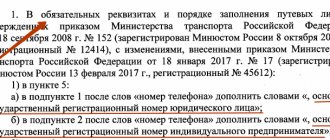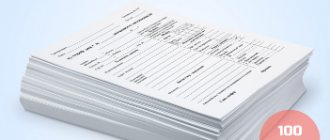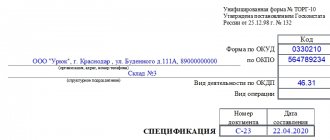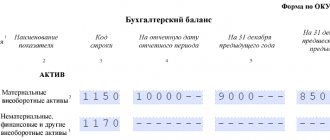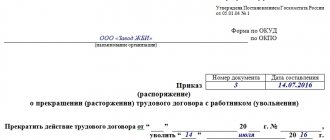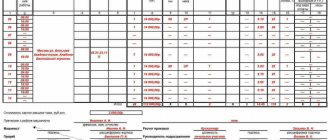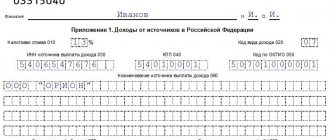Why is it necessary to create waybills?
If a company uses vehicles, then it must organize proper recording of its performance indicators.
This is necessary not only to plan the costs of its operation and justify tax expenses, but also to ensure the safety of the machines for both company employees and third parties.
For these purposes, entities can develop and use waybills that reflect transport operating time, mileage, downtime, amount of cargo transported, etc. There are document forms recommended by Rosstat, which are divided into two types - 4-C and 4-P.
The waybill contains notes from all responsible persons responsible for its safety regarding the permission of both the vehicle and the driver to operate. In this form, the tanker reflects the amount of fuel issued to this vehicle, and the calculator determines its planned and actual consumption.
Attention! In this document, the driver reflects the detailed route of the car, recording the exact addresses. This allows management to determine how assigned tasks are being performed and to prove to clients that the appropriate services have been provided.
A waybill can be issued for every day, and, if necessary, for a work shift. When transporting cargo and passengers, the waybill is one of the most important documents.
Logbook for recording the results of pre-trip control
The logbook for recording the results of pre-trip control must contain the following details: 1) name of the make and model of the vehicle; 2) state registration plate of the vehicle; 3) last name, first name, patronymic (if any) of the driver of the vehicle; 4) last name, first name, patronymic (if any) of the inspector who carried out the pre-trip control; 5) date, time of pre-trip control; 6) odometer readings (full kilometers) during pre-trip control; 7) mark on passing pre-trip control; signature of the vehicle driver; 9) signature of the controller who carried out the pre-trip control.
2) state registration plate of the vehicle; 3) last name, first name, patronymic (if any) of the driver of the vehicle; 4) last name, first name, patronymic (if any) of the inspector who carried out the pre-trip control; 5) date, time of pre-trip control; 6) odometer readings (full kilometers) during pre-trip control; 7) mark on passing pre-trip control; signature of the vehicle driver; 9) signature of the controller who carried out the pre-trip control.
You can .
The article was prepared, among other things, using materials from the website “HR Blog”
Types of waybills for trucks
Depending on what indicators are used to record vehicle operation, there are two types of waybills - 4-C and 4-P.
Form 4-P
Waybill 4-P is used in cases where the operation of transport is recorded on the basis of recording the time of its operation. This document is filled out when the fee for using a car is calculated based on time rates.
For example, when a vehicle transports goods, and payment is made not for the tonnage transported, but for the time the vehicle is in operation. However, there is a limitation in its application. Such a waybill can be issued if cargo is delivered to no more than two destinations per day.
Form 4-C
This form 4-C is most often used to document the operation of vehicles. It allows you to take into account the piecework indicators of vehicle use.
This waybill is used by carriers who charge per ton-kilometer.
New forms and samples with additional details from December 15
Next, you can download new forms and samples of new waybills used from December 15, 2021:
| Waybills from December 15, 2021 | |
| Form of waybill for a passenger car (simplified form | Sample filling |
| Form of waybill for a light car (form 3) | Sample filling |
| Form of a track truck with time payment | Filling example |
| Form of a track truck with piecework payment | Filling example |
Truck waybill form 2021 free download
Download the truck waybill form according to Form 4-P in Excel format.
Download the form 4-C truck waybill in Excel format.
Sample of filling out Form 4-C in Excel format.
Sample of filling out the 4-P form in Excel format.
Sample of filling out a waybill in 2021
According to form 4-P
Front side
Such a waybill is used if the driver is paid according to the hourly payment system. It is intended for only two flights, and to record them, there are two tear-off coupons on the form, which are issued and handed over to customers.
Filling out the form must begin from the top. The company stamp is affixed in the right corner. Next, you must indicate the series and number of the document, and the date when it was compiled.
The following line contains information about the organization. According to the new rules, in addition to the name, address and telephone number, it is now necessary to enter the OGRN number. On the right side of the table you need to enter the OKPO code.
In the columns on the left side of the form, information about the car and the driver is recorded. Here you need to enter the make of the car, its garage and license plate number, full name. driver and his driver's license details. Next are the columns where you can indicate information about trailers working with the machine - their brand, license plate and garage.
You might be interested in:
Application for the transition of an LLC to UTII, form UTII-1: instructions for filling out
The following table records the task for the driver - the name of the company at whose disposal he comes, the time of arrival and departure, the number of hours of work and flights. In total, you can enter information about two routes.
Under the table, the dispatcher indicates the amount of fuel that needs to be filled into the car, and with a signature confirms admission to the flight. Below, the admission note is made by the doctor.
On the right, the dispatcher enters information into the tables. At the top, he must enter data about the day, month, hours and minutes according to the schedule, mileage according to the speedometer, and actual time indicators. These indicators must be indicated for both departure and return.
The following table contains data on the movement of fuel. Here you need to write down its name, how much was filled, the remainder in the tank when leaving and returning to the garage. Data on the idle operating time of special equipment and the engine can also be indicated here.
Confirming signatures are placed under the sign by the tanker, mechanic and dispatcher.
Next, the mechanic and the driver alternately sign the acceptance and delivery of the vehicle.
At the bottom there are two cutting coupons. On this side of the form they are filled out by the owner of the vehicle. Here information about the waybill for which they are issued, indicators for calculation and their tariff rates are entered. At the bottom of the tear-off coupon, the cost of the services provided is summed up, after which the signatures are placed by the accountant and the person in charge.
Reverse side
The reverse side is partially filled in by the transportation customer. It consists of two parts, each is filled in the same way.
First you need to indicate the name of the customer, the date and time of arrival and departure, and the speedometer readings at that moment. Then you need to enter information about the invoices on which the goods were transported, the number of flights, and route points.
If there were downtimes on the line, then they need to be entered into a special table, indicating the reasons and start and end dates.
The table at the bottom contains the indicators used to calculate the work, and the total cost for the customer is summed up.
Each invoice is signed by the payer and the person responsible for receiving the service.
Below is the second side of the cutting coupons. Here the data is also entered by the customer of the service. Here you need to enter the name of the car owner, its make and license plate number, the name of the customer, the date and time of arrival and departure of the car, the speedometer readings at each of these moments.
The information about invoices is duplicated below. In conclusion, it is necessary to summarize the number of invoices, the number of flights, and indicate whether a forwarder was involved during the trip.
According to form 4-C
Front side
This waybill should be used when using piecework indicators.
Despite the innovations, they did not require changing the form of the old form. Its filling starts from the top. In the left corner you need to put the organization’s stamp, then in the middle write down the series, document number and date of its execution.
The next line contains information about the company. In addition to the name, address and contact phone number, you also need to write down the OGRN number here. The OKPO number is entered into the table on the right.
Next, you need to enter information in the left block column. Here you can indicate the car make, state sign and garage number, full name. driver, his personnel number and driver's license information.
Next there are 4 blocks of columns in which you can enter information about the trailers - make, license plate, garage number.
Next, you can record information about the persons who are traveling with the car.
The right block of the graph is filled in by the dispatcher. It records data about the planned day, month, hours and minutes of work, speedometer readings, and actual departure data. All these indicators are indicated first at the time of leaving the garage, and then when returning.
Next is a table with information about the movement of fuel. Here you need to enter the brand of fuel, how much was in the tank when leaving and returning, and how much was filled. To correctly calculate consumption, you can also indicate here the time during which the engine was idling, or special equipment was used.
The tanker, mechanic and dispatcher put their signatures under the data on the movement of fuel, confirming the entered data.
The following table spans the entire width of the document. Here you need to indicate where the car is sent, the time of loading and unloading, the name of the cargo, the mileage and tonnage of the trip and other data. If several flights are planned per working day, they can all be entered here on separate lines.
The lower part is intended for affixing signatures by responsible persons. On the left side, the dispatcher indicates how much fuel the car needs to be filled, confirms the readiness of the car and the driver for work. The lower level of travel clearance is given by a staff physician.
Next, in the middle of the sheet, a mechanic makes a note about the serviceability of the car. He and the driver alternately sign the acceptance and transfer of the car when leaving the garage and when returning.
On the right side there are empty columns for other marks of responsible persons in the organization.
Reverse side
Next, fill out the back part. At the top there is a table in which the process of completing the task is entered.
This should indicate:
- Loading and unloading points;
- Date, hours and minutes of loading and unloading;
- Information about the operation of the trailer;
- Data on the trade documents used to transport the goods;
- Information and signature of the responsible person from the sender or recipient.
If several flights were performed per day, then each one must be entered in the table in a separate line.
Next, the driver and dispatcher sign the delivery and acceptance of the voucher.
The following table is filled in if there were downtime during the working day. The reason, start and end times, and the signature of the responsible person are indicated.
The last table on this side summarizes the vehicle's performance and can be used to calculate payroll.
Here are the following:
- Data on fuel consumption according to norm and fact;
- Information about the operating time of the vehicle and trailer, with explanation;
- Number of flights and total mileage;
- Tonnage of transported goods;
- Accrual code and wage amount.
The signature of the responsible person is placed under the table.
Document storage order
The storage of waybills is regulated by several documents at once - Order of the Ministry of Transport No. 152 and Order of the Ministry of Culture No. 558. However, there is some inconsistency in the information in these documents.
Thus, the order of the Ministry of Transport establishes that it is necessary to store travel forms for at least 5 years. The organization may, at its discretion, extend this period for any period.
But the order of the Ministry of Culture states that the storage period for the voucher is 5 years, but on the condition that during this time it was checked by regulatory authorities.
It follows that if a given area has not been subject to inspections for 5 years, then the company has no right to destroy documents. Separately, the order mentions that if a voucher is the only document that can confirm the harmfulness of an employee’s work, then its storage period must be at least 75 years.
Attention! In addition, since the voucher acts as an accounting or tax document, it is also subject to the provisions of the Tax Code and the accounting law. The first determines the storage period of documents for at least 4 years, and in the second - 5 years.
Answers to common questions
Question No. 1 : Individual entrepreneurs carrying out transportation may own several cars. Is it necessary to re-register these vehicles as an individual entrepreneur?
Answer : The status of an individual entrepreneur does not subdivide the property of a citizen and the same individual entrepreneur. Thus, an individual entrepreneur has the right to use his property both in business activities and for personal purposes. Registration of a vehicle owned by an individual entrepreneur is carried out in the same manner as for an individual. individuals (not individual entrepreneurs). Thus, re-registration of vehicles owned by individuals. a person is not required for entrepreneurship.
Question No. 2 : Is it necessary to issue a waybill for the head of the organization if the vehicle is used and is listed on the balance sheet?
Answer : The manager is also obliged to comply with the requirements for the use of the organization’s vehicle, that is, a waybill must be issued, but it can be issued for a period of up to 1 month. Even for the head of a vehicle for official purposes, you need to have the appropriate documents.
